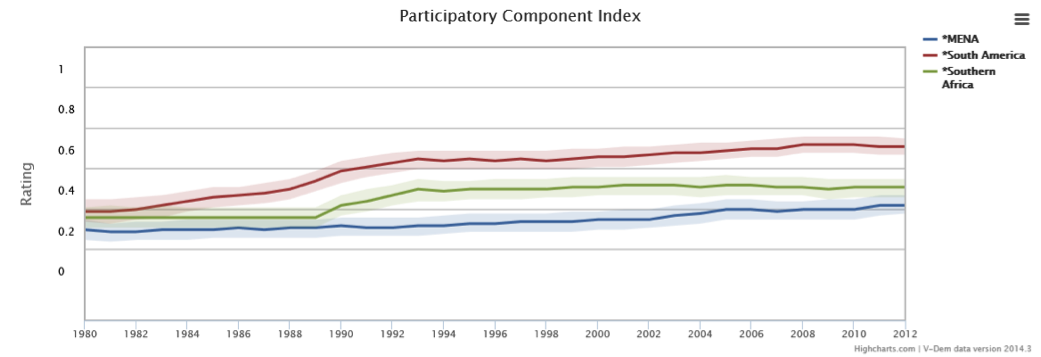Sustainable Development Goal 16.7
By: V-Dem Staff
Oct 28, 2015
V-Dem provides a range of measures that captures these concepts, including the participatory component index. It measures the extent to which the participatory principle of democracy is achieved. It emphasizes active participation by citizens in all political processes, both electoral and non-electoral. The index includes the sub-indices of civil society participation, direct popular vote, and the power of local and regional governments.
In the figure below, the index is graphed for three regions; MENA, South America and Southern Africa. All three regions have historically scored low on the index. This, however, is not unusual since among the dimensions of democracy, the participatory principle is the one in which countries generally score the lowest.
In the beginning of the 80s, all three regions score on a level between .2 and .4 (on a scale that runs from 0 to 1), suggesting very limited participation by citizens in the political processes. During the third wave of democratization, improvements occurred in South America, beginning in the mid-80s. Progress is also evident in Southern Africa in the end of the 80s, reflecting its later democratic onset. The MENA region has experienced only limited improvement over time, with a score of just above .2 even in recent years. The largest advancement takes place in South America, where a score of .6 is achieved. In recent years the average in Southern Africa stands at .4.
Overall, despite improvements, the level of participatory democracy in these regions still leaves room for substantial improvement, particularly in Southern Africa and the MENA region.


